AMD’s GTX 560 Ti Counter-Offensive: Radeon HD 6950 1GB & XFX’s Radeon HD 6870 Black Edition
by Ryan Smith on January 25, 2011 12:20 PM ESTThe Test & Gaming Performance
For our testing we are using both AMD and NVIDIA’s latest drivers where suitable. For AMD this means the 11.1a Hotfix, and for NVIDIA this means the 266.58 drivers for the GTX 400 and 500 series, 266.56 for the new GTX 560 Ti, and 262.99 for the GTX 200 series. Compared to our previous benchmarks NVIDIA Civilization V performance is way up, and SmallLuxGPU performance is up for both AMD and NVIDIA. There are no significant performance improvements elsewhere.
For NVIDIA cards all tests were done with default driver settings unless otherwise noted. As for AMD cards, we are disabling their new AMD Optimized tessellation setting in favor of using application settings (note that this doesn’t actually have a performance impact at this time), everything else is default unless otherwise noted.
| CPU: | Intel Core i7-920 @ 3.33GHz |
| Motherboard: | Asus Rampage II Extreme |
| Chipset Drivers: | Intel 9.1.1.1015 (Intel) |
| Hard Disk: | OCZ Summit (120GB) |
| Memory: | Patriot Viper DDR3-1333 3 x 2GB (7-7-7-20) |
| Video Cards: |
AMD Radeon HD 6970 AMD Radeon HD 6950 2GB AMD Radeon HD 6950 1GB AMD Radeon HD 6870 AMD Radeon HD 6850 AMD Radeon HD 5970 AMD Radeon HD 5870 AMD Radeon HD 5850 AMD Radeon HD 5770 AMD Radeon HD 4870 NVIDIA GeForce GTX 580 NVIDIA GeForce GTX 570 NVIDIA GeForce GTX 560 Ti NVIDIA GeForce GTX 480 NVIDIA GeForce GTX 470 NVIDIA GeForce GTX 460 1GB NVIDIA GeForce GTX 460 768MB NVIDIA GeForce GTS 450 NVIDIA GeForce GTX 285 NVIDIA GeForce GTX 260 Core 216 |
| Video Drivers: |
NVIDIA ForceWare 262.99 NVIDIA ForceWare 266.56 Beta NVIDIA ForceWare 266.58 AMD Catalyst 10.10e AMD Catalyst 11.1a Hotfix |
| OS: | Windows 7 Ultimate 64-bit |
For our look at gaming performance we’re going to skip our running commentary at this time. In practice the 1GB 6950 is just as fast as the 2GB 6950 at 1920x1200 and 1680x1050 – the essential resolutions for a $260 card. It’s only at 2560x1600 and Eyefinity resolutions that the 2GB card makes a difference with most games at this time. This is likely to change in the near future, but for the time being –and as you’ll see – there’s little disadvantage to a 1GB 6950 right now.
Meanwhile we’re also including the XFX Radeon HD 6870 Black Edition in these charts. In general it’s around 5% faster than a stock-clocked 6870, which isn’t enough to cut in to the GTX 560 Ti’s 10-15% lead. At $20 less than the GTX 560 Ti this makes it a potential value spoiler, but not a direct competitor.
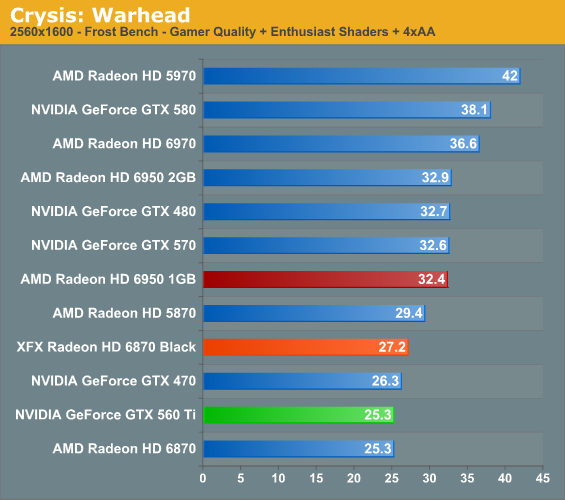
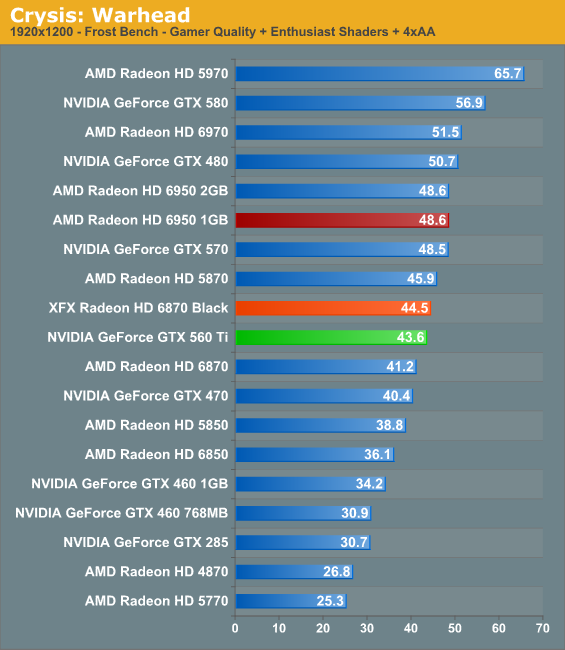
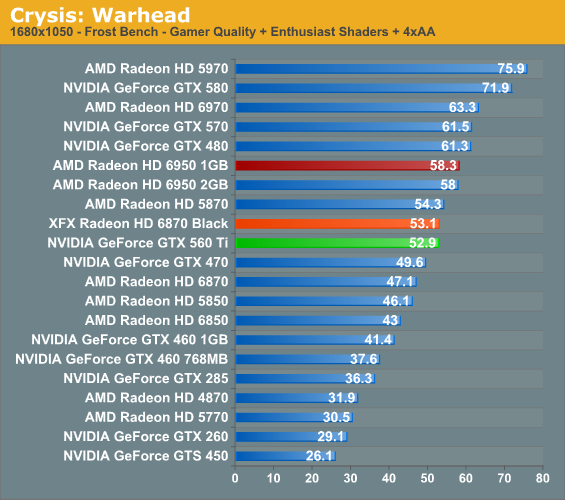
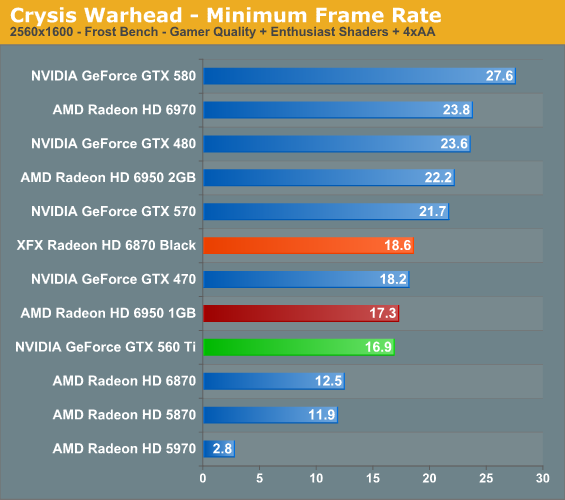
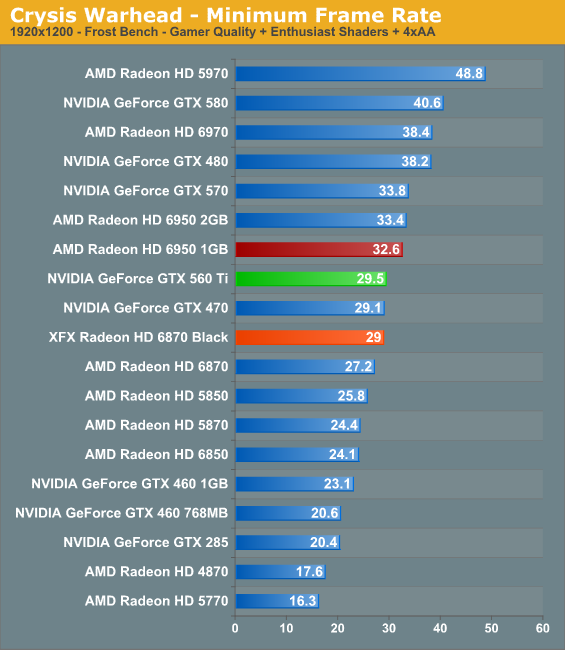
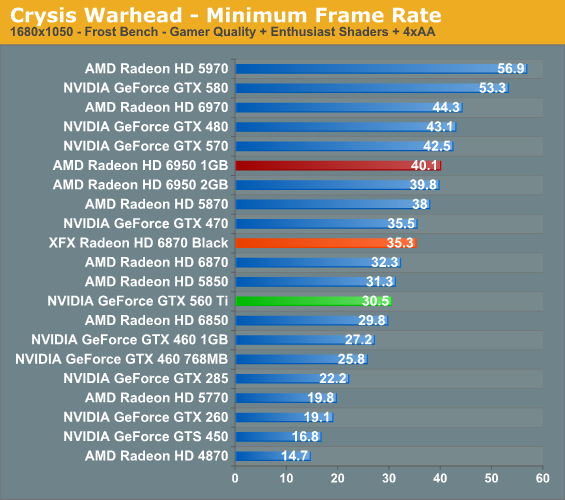

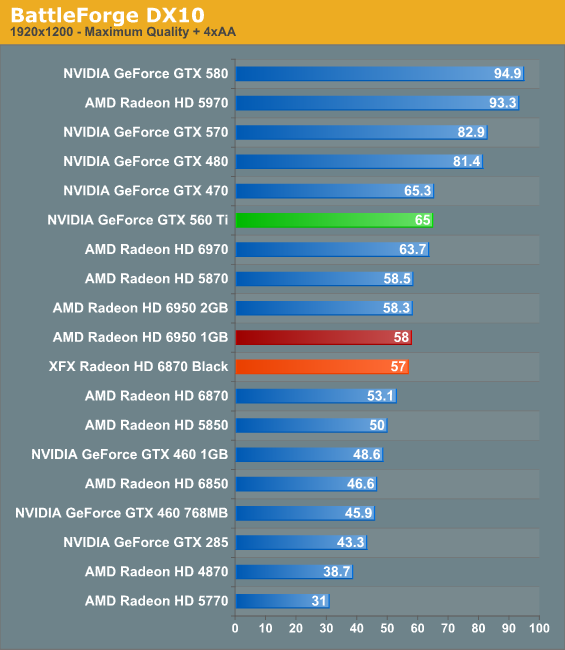
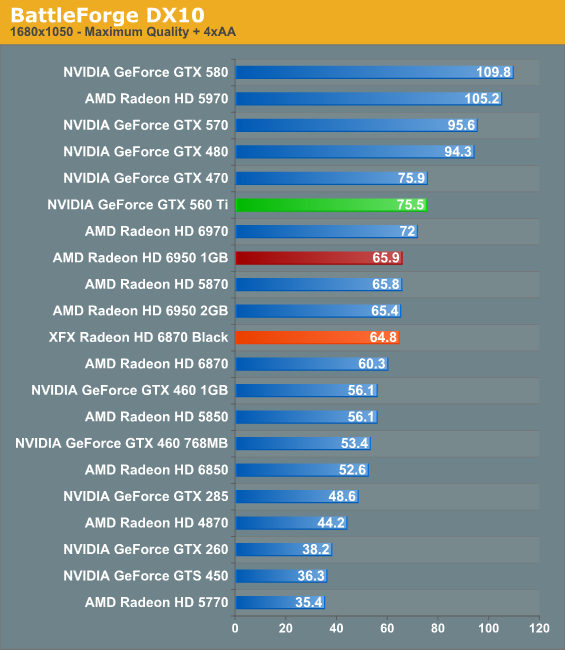

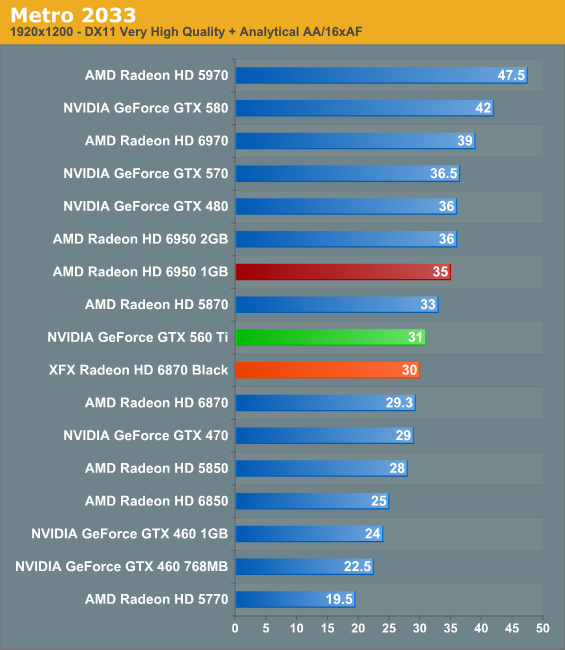
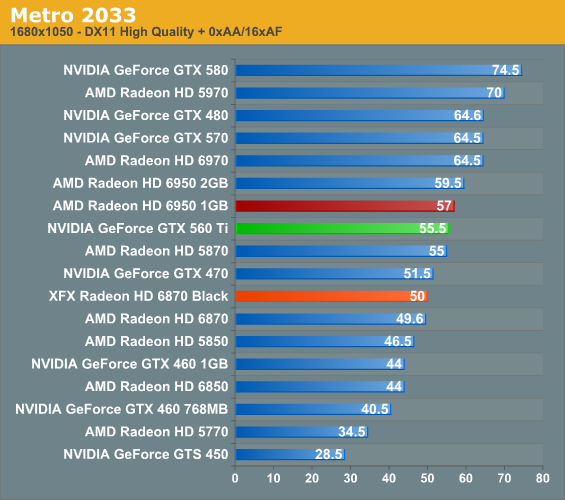
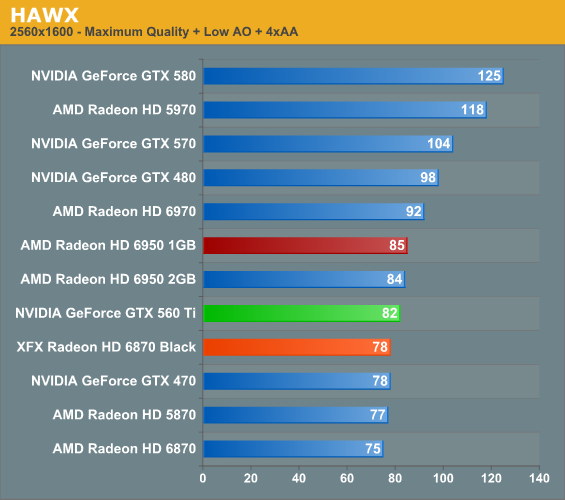
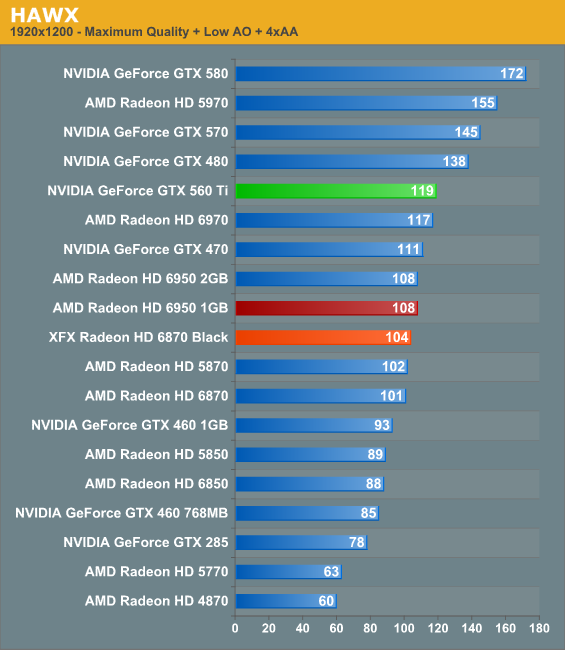
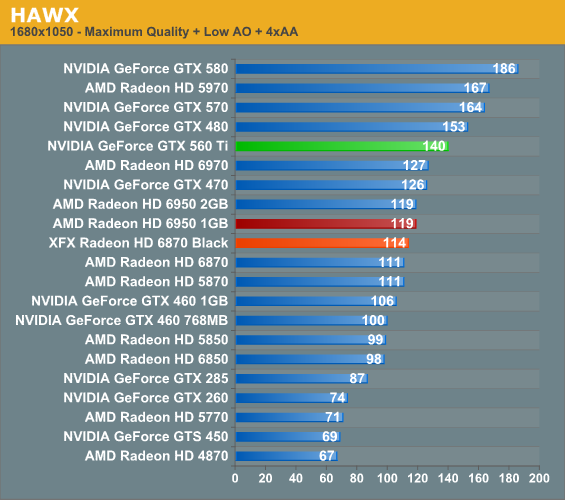
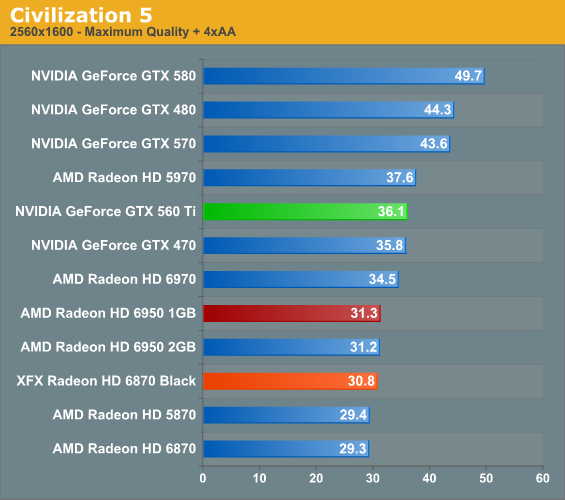
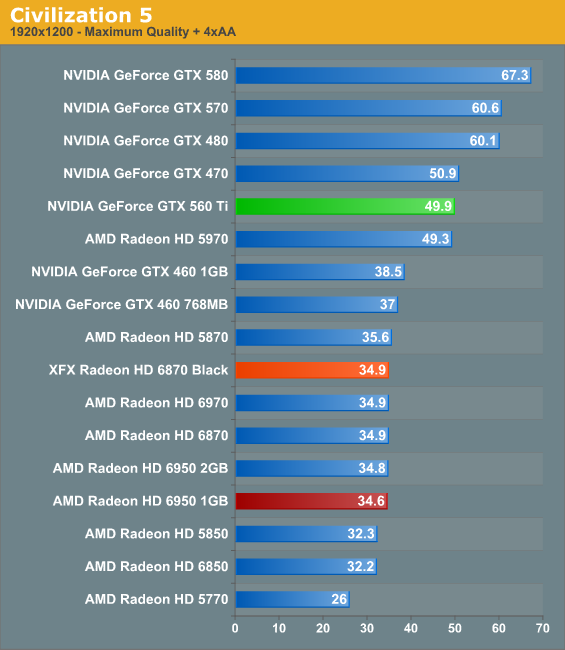
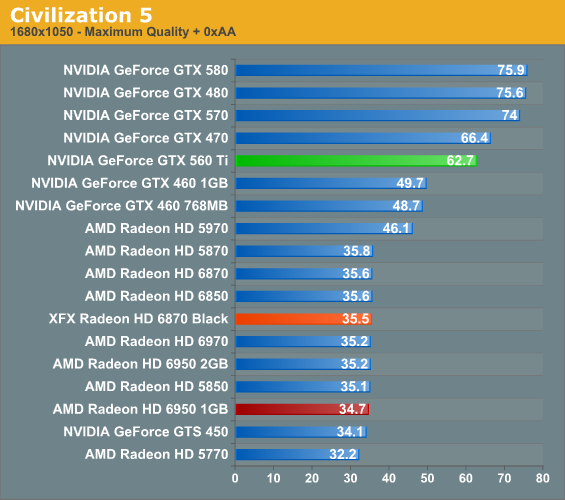
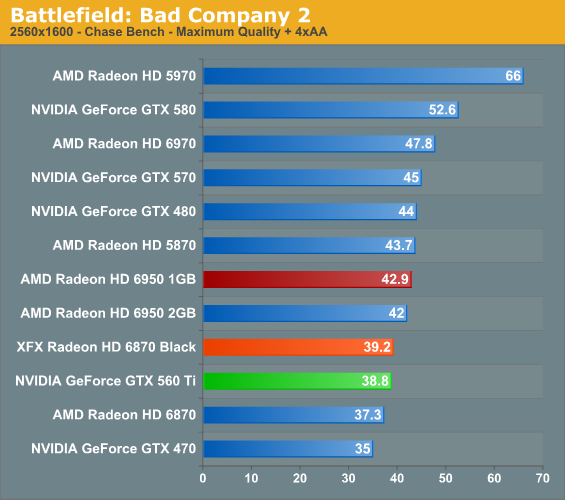
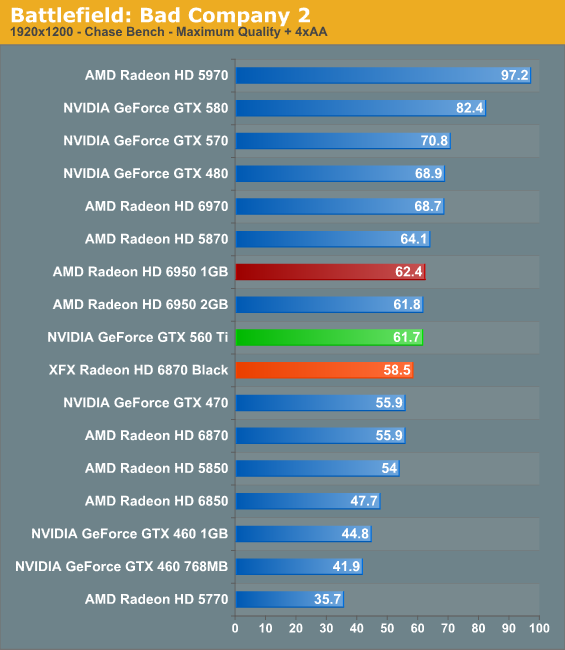
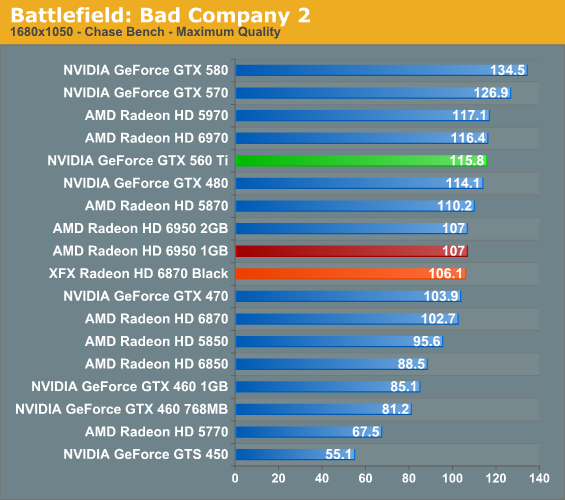
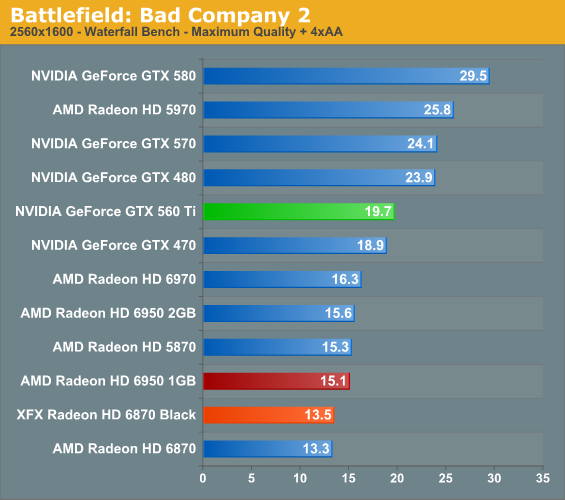

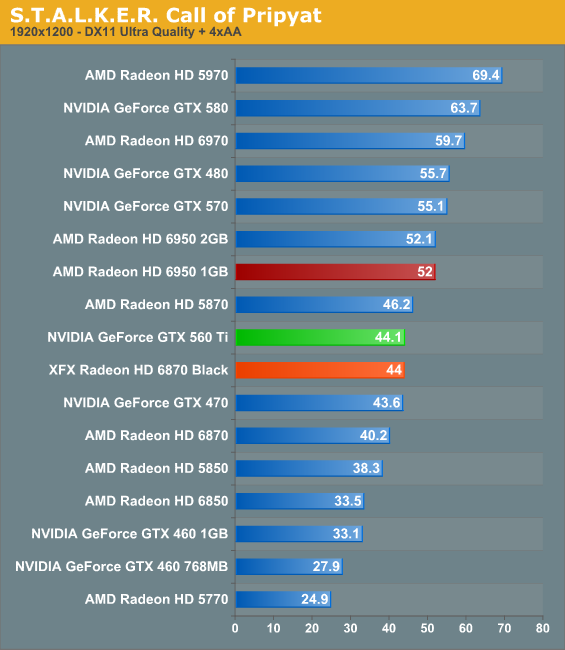
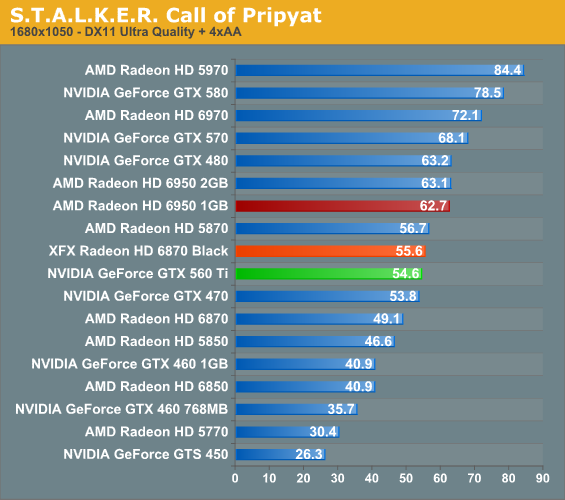
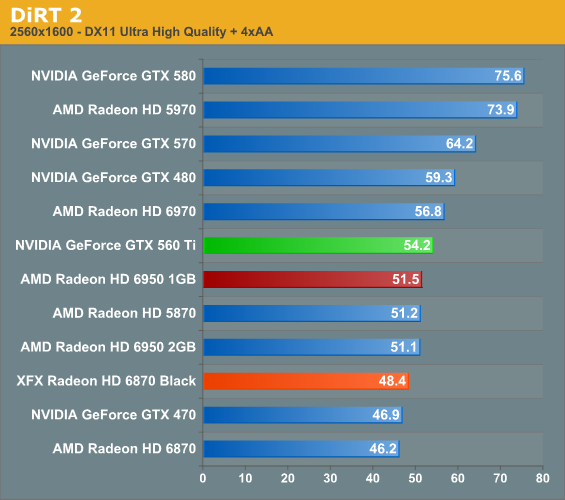
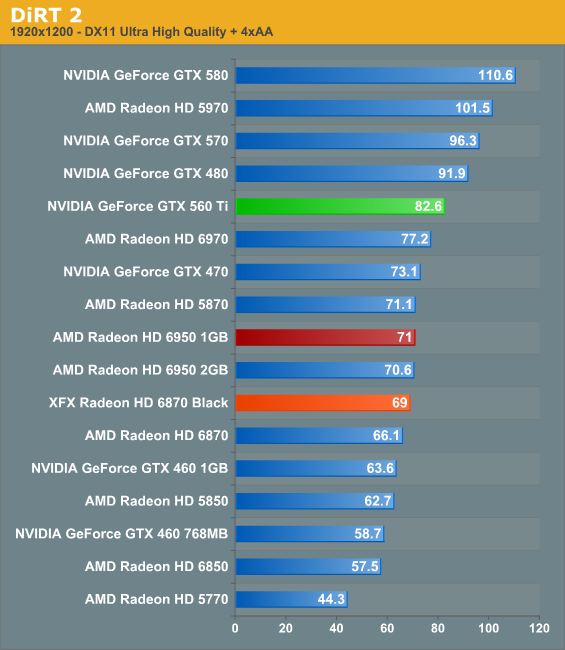

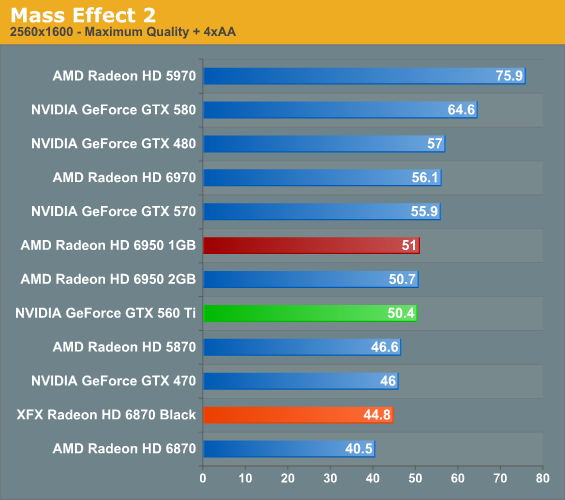
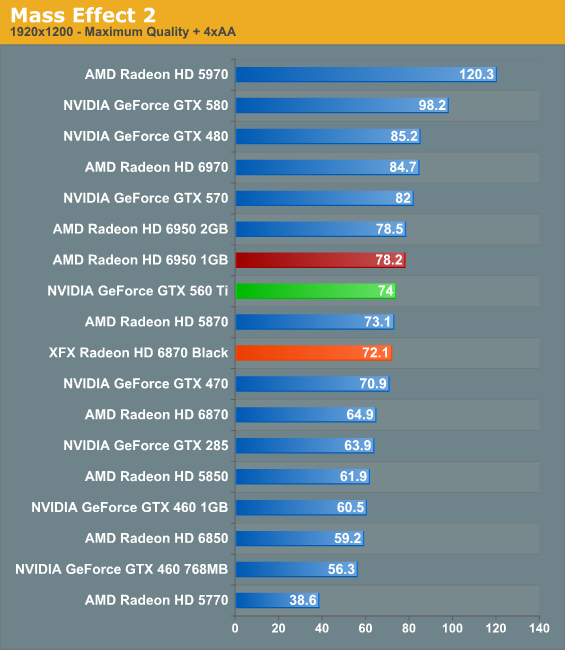
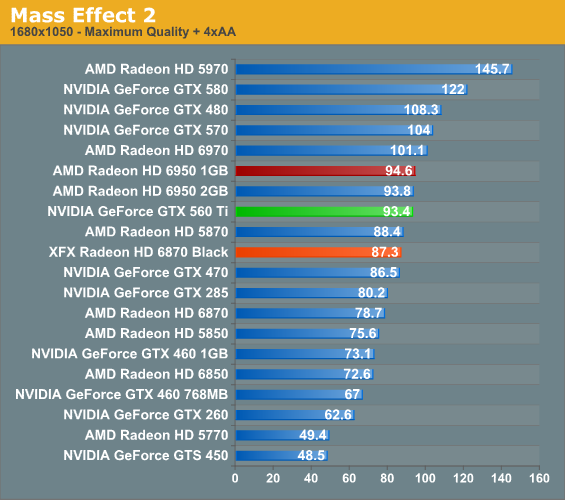




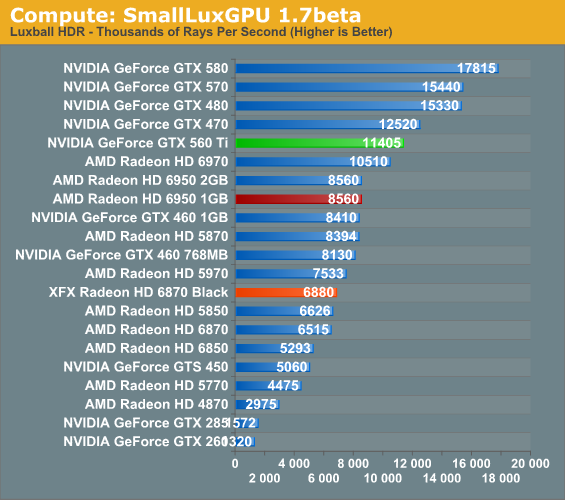










111 Comments
View All Comments
7Enigma - Tuesday, January 25, 2011 - link
Here's the point. There is no measurable difference with it on or not from a framerate perspective. So in this case it doesn't matter. That should tell you that the only possible difference in this instance would be a possible WORSENING of picture quality since the GPU wars are #1 about framerate and #2 about everything else. I'm sure a later article will delve into what the purpose of this setting is for but right now it clearly has no benefit from the test suite that was chosen.I agree with you though that I would have liked a slightly more detailed description of what it is supposed to do...
For instance is there any power consumption (and thus noise) differences with it on vs. off?
Ryan Smith - Tuesday, January 25, 2011 - link
For the time being it's necessary that we use Use Application Setting so that newer results are consistent with our existing body of work. As this feature did not exist prior to to the 11.1a drivers, using it would impact our results by changing the test parameters - previously it wasn't possible to cap tessellation factors like this so we didn't run our tests with such a limitation.As we rebuild our benchmark suite every 6 months, everything is up for reevaluation at that time. We may or may not continue to disable this feature, but for the time being it's necessary for consistent testing.
Dark Heretic - Wednesday, January 26, 2011 - link
Thanks for the reply Ryan, that's a very valid point on keeping the testing parameters consistent with current benchmark results.Would it be possible to actually leave the drivers at default settings for both Nvidia and AMD in the next benchmark suite. I know there will be some inconsistent variations between both sets of drivers, but it would allow for a more accurate picture on both hardware and driver level (as intended by Nvidia / AMD when setting defaults)
I use both Nvidia and AMD cards, and do find differences between picture quality / performances from both sides of the fence. However i also tend to leave drivers at default settings to allow both Nvidia and AMD the benefit of knowing what works best with their hardware on a driver level, i think it would allow for a more "real world" set of benchmark results.
@B3an, perhaps you should have used the phrase "lacking in cognitive function", it's much more polite. You'll have to forgive the oversight of not thinking about the current set of benchmarks overall as Ryan has politely pointed out.
B3an - Wednesday, January 26, 2011 - link
You post is simply retarded for lack of a better word.Ryan is completely right in disabling this feature, even though it has no effect on the results (yet) in the current drivers. And it should always be disabled in the future.
The WHOLE point of articles like this is to get the results as fair as possible. If you're testing a game and it looks different and uses different settings on one card to another, how is that remotely fair? What is wrong with you?? Bizarre logic.
It would be the exact same thing as if AMD was to disable AA by default in all games even if the game settings was set to use AA, and then having the nVidia card use AA in the game tests while the AMD card did not. The results would be absolutely useless, no one would know which card is actually faster.
prdola0 - Thursday, January 27, 2011 - link
Exactly. We should compare apples-to-apples. And let's not forget about the FP16 Demotion "optimization" in the AMD drivers that reduces the render target width from R16G16B16A16 to R11G11B10, effectively reducing bandwidth from 64bits to 32bits at the expense of quality. All this when the Catalyst AI is turned on. AMD claims it doesn't have any effect on the quality, but multiple sources already confirmed that it is easily visible without much effort in some titles, while in some others it doesn't have. However it affects performance for up to 17%. Just google "fp16 demotion" and you will see a plenty of articles about it.burner1980 - Tuesday, January 25, 2011 - link
Thanks for not listening to your readers.Why do you have to include an apple to orange comparison again ?
Is it so hard to test Non-OC vs Non-OC and Oc vs. OC ?
The article itself is fine, but please stop this practice.
Proposal for an other review: Compare ALL current factory stock graphic card models with their highest "reasonable" overclock against each other. Which valus does the customer get when taking OC into (buying) consideration ?
james.jwb - Tuesday, January 25, 2011 - link
quite a good idea if done correctly. Sort of 460's and above would be nice to see.AnnonymousCoward - Thursday, January 27, 2011 - link
Apparently the model number is very important to you. What if every card above 1MHz was called OC? Then you wouldn't want to consider them. But the 6970@880MHz and 6950@800MHz are fine! Maybe you should focus on price, performance, and power, instead of the model name or color of the plastic.I'm going to start my own comments complaint campaign: Don't review cards that contain any blue in the plastic! Apples to apples, people.
AmdInside - Tuesday, January 25, 2011 - link
Can someone tell me where to find a 6950 for ~$279? Sorry but after rebates do not count.Spoelie - Tuesday, January 25, 2011 - link
If you look at the numbers, the 6870BE is more of a competitor than the article text would make you believe - in the games where the nvidia cards do not completely trounce the competition.Look at the 1920x1200 charts of the following games and tell me the 6870BE is outclassed:
*crysis warhead
*metro
*battlefield (except waterfall? what is the point of that benchmark btw)
*stalker
*mass effect2
*wolfenstein
If you now look at the remaining games where the NVIDIA card owns:
*hawx (rather inconsequential at these framerates)
*civ5
*battleforge
*dirt2
You'll notice in those games that the 6950 is just as outclassed. So you're better of with an nvidia card either way.
It all depends on the games that you pick, but a blanket statement that 6870BE does not compete is not correct either.